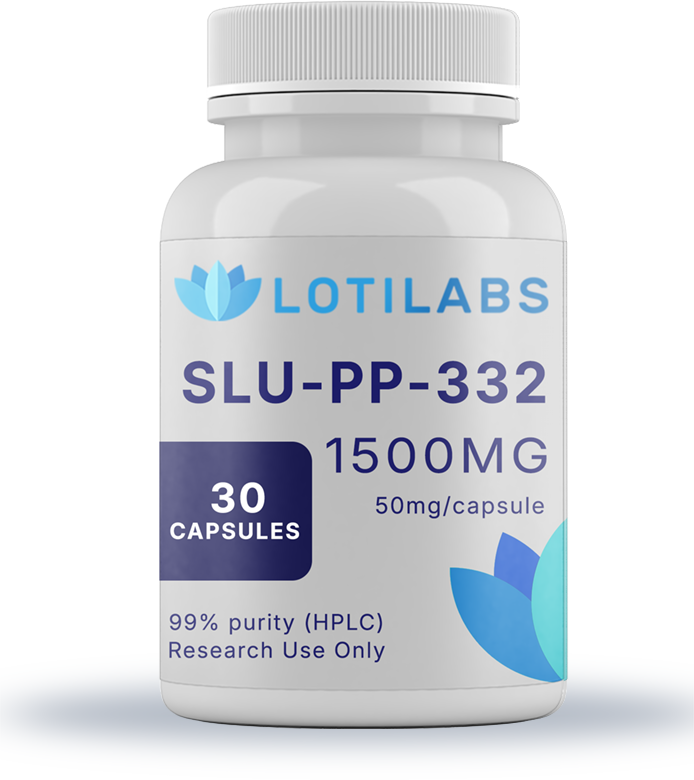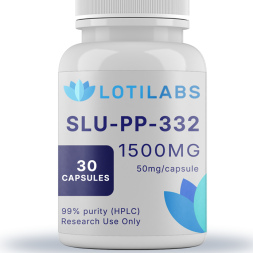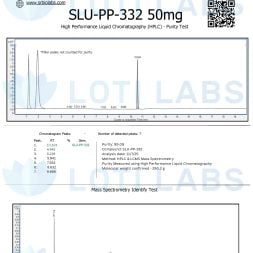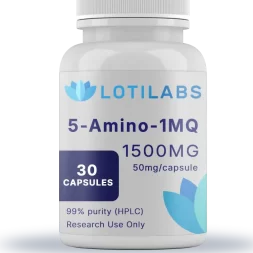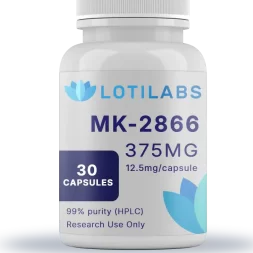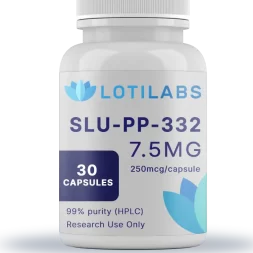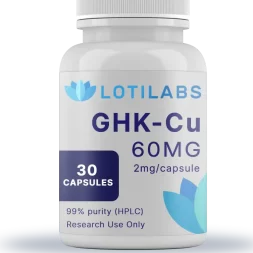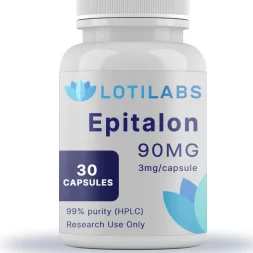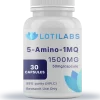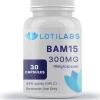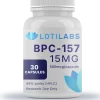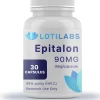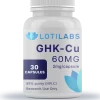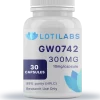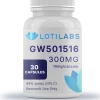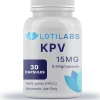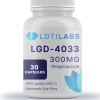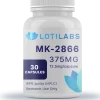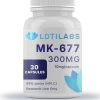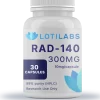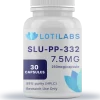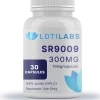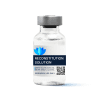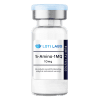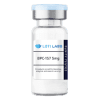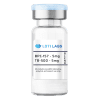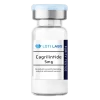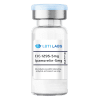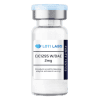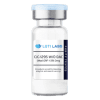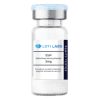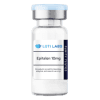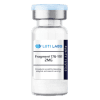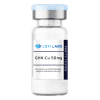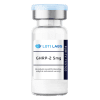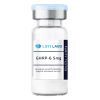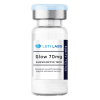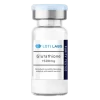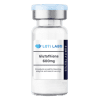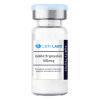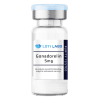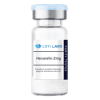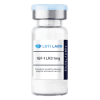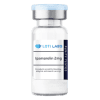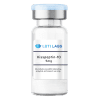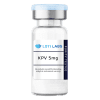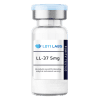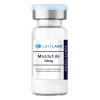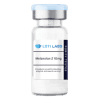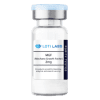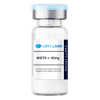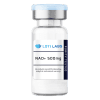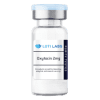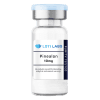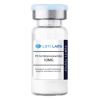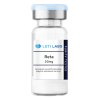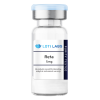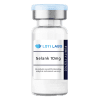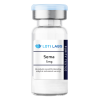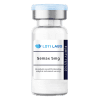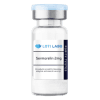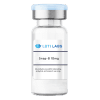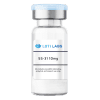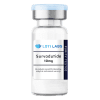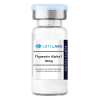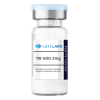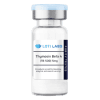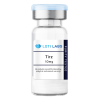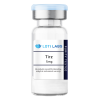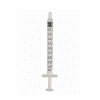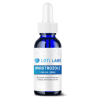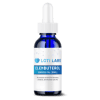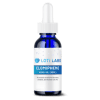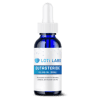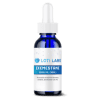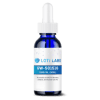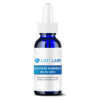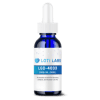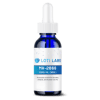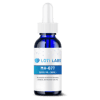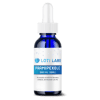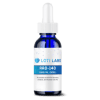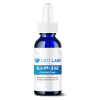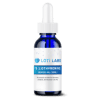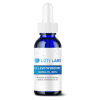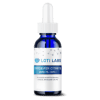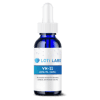SLU-PP-332 Capsules (50mg/capsule, 30 capsules)
Original price was: $199.99.$159.99Current price is: $159.99.
You save
This product is intended as a research chemical only. This designation allows the use of this chemical strictly for in-vitro laboratory testing and experimentation. Human or veterinary use is strictly forbidden. This product is not a drug, food or cosmetic and may not be misbranded, mislabeled or misused as such.
In stock

Buy SLU-PP-332 at Loti Labs
Research into estrogen related receptor (ERR) agonists has opened up some really cool avenues for understanding cellular metabolism and exercise adaptation mechanisms. SLU PP 332 is a synthetic research compound originally developed at Saint Louis University School of Medicine and is a big deal in this space. As a non-selective agonist for ERRα, ERRβ, and ERRγ receptors, this compound is a must have for researchers studying mitochondrial function, metabolic pathways and exercise mimetic effects in the lab.
Loti Labs offers high quality SLU-PP-332 for research use only, complying with research use only regulations and supporting the scientific community’s ongoing research into metabolic regulation and cellular energy systems.
Molecular Structure of SLU-PP-332
SLU PP 332 is a specialized research compound with a well defined molecular structure that makes it useful for lab research. The compound has CAS Number 303760-60-3, so you can use this to procure and document.
From a chemical classification perspective SLU PP is an ERR agonist compound, designed to interact with estrogen related receptor systems. Research has shown it has high affinity binding, with an EC50 of ~98 nM for ERRα activation, so it’s a potent receptor agonist in the lab.
It’s a white to off white powder in the lab, so you can measure and handle it easily. PubChem has all the identification data for 332 so you can access the molecular data for your protocols.
Physical specs show SLU is stable under proper storage conditions, molecular weight and formula available through standard chemical databases. These are important for calculating molar concentrations and designing your protocols that require molecular ratios.
Mechanism of Action
The mechanism of action of SLU-PP-332 involves some fancy cellular pathways that researchers love for metabolic studies. Research shows it activates estrogen related receptors ERRα, ERRβ, and ERRγ, with preference for ERRα in the lab.
Lab studies have shown PP 332 increases mitochondrial biogenesis through the PGC-1α pathway, which is key to understanding exercise adaptation at the cellular level. When you use this compound in the lab, data suggests it may increase the transcriptional activity of factors that regulate mitochondrial function and energy metabolism. The exercise mimetic effects seen in the lab seem to come from the compound’s ability to affect cellular metabolism without exercise. Studies in animal models have shown SLU PP can increase fatty acid oxidation and energy expenditure so you can study metabolic pathways independent of exercise interventions.
Research has shown that skeletal muscle cells respond to this compound by increasing oxidative capacity, which is what happens with endurance training. The cellular response is increased ATP production and improved mitochondrial efficiency, which is useful for studying age related metabolic decline and muscle function.
Research
Extensive lab research has been done on SLU-PP-332 across various research areas. Mouse models have provided some really useful data on metabolic syndrome and obesity related pathways.
Studies using 50 mg/kg dosing in lab mice have shown significant changes in fat mass composition, research suggests the compound may affect adipose tissue metabolism through ERR activation. These results help researchers understand the relationship between ERR signaling and body composition.
Research into insulin sensitivity has shown promising results, lab models have shown increased glucose utilization and metabolic flexibility. Mice treated with the compound have improved metabolic markers compared to controls, which gives insight into the mechanisms of metabolic health.
Mitochondrial function studies have shown SLU PP 332 may increase oxidative phosphorylation capacity in cellular models. Research teams have used this compound to study how ERR activation affects mitochondrial biogenesis and energy production at the cellular level.
Comparative studies with exercise have given researchers a unique perspective on exercise adaptation. Data from these studies suggest the compound can produce cellular changes similar to exercise, though the long term implications need more research.
Recent research has even looked into potential applications in COVID-19 prevention hypothesis research, though these are early stage and focus on cellular mechanism research not therapeutic applications.
Storage and Safety
Proper handling and storage of SLU-PP-332 requires following standard lab protocols for research compounds. The powder form is stable when stored under proper conditions, typically controlled temperature and humidity that research facilities maintain.
Stability requirements are to store the compound in a cool, dry place away from direct light. Research labs typically store at 2-8°C for long term stability, though specific protocols may vary depending on your experimental requirements and facility standards. Handling precautions for research use follow standard lab safety protocols for synthetic research compounds. Personnel working with SLU should wear appropriate PPE, gloves, eye protection, lab coats. Proper ventilation systems are in place for safe handling during experiments.
Lab protocols require researchers to document storage conditions, handling procedures and experimental usage. Research facilities have standard operating procedures for disposal and emergency response for accidental exposure.
Equipment needed for safe handling includes precision analytical balances, storage containers for research compounds, standard lab equipment. These are the same as typical research facility protocols for synthetic compound research.
Why Buy from Loti Labs
Loti Labs has high purity standards for SLU-PP-332, 99%+ purity meets research grade. This ensures researchers get consistent material for their experiments and data collection.
Loti Labs has a reliable supply chain to support ongoing research projects that need consistent access to research compounds. Research teams can count on steady supply which is crucial for longitudinal studies and multi-phase experiments that may go on for months or years.
Professional packaging protects the research compound during shipping and storage. Loti Labs has packaging protocols designed for research applications so the material arrives in lab ready condition.
Technical support provides researchers with product specs, handling guidance and application information. This is helpful for research teams implementing new protocols or need clarification on usage parameters for their specific research goals.
Quality control documentation is included with each shipment, researchers get batch specific information to support their experimental documentation. This attention to detail helps research teams meet the standards for peer reviewed publications and regulatory compliance.
Products from Loti Labs are for Research Use Only
SLU-PP-332 from Loti Labs is for in-vitro laboratory testing and experimentation only. This is to comply with regulations for research compounds and protect researchers and suppliers from legal issues.
Human or veterinary use is strictly prohibited for all SLU PP products from Loti Labs. Research facilities purchasing this compound must have strict protocols to prevent any use outside of approved laboratory research, including animal studies under institutional oversight.
This product is not a pharmaceutical, food additive or cosmetic ingredient. Research use only excludes all applications that involve human consumption, topical application or therapeutic use outside of controlled research environments. Research chemical regulations require purchasing institutions to have documentation, storage protocols and usage records. Research facilities typically have institutional review board and safety committee oversight when using compounds like 332 in their experiments.
Educational institutions and commercial research labs purchasing from Loti Labs must have facilities, qualified personnel and established safety protocols before receiving research compounds. This verification process ensures all users understand and comply with the research use only restrictions.
Loti Labs Shipping Policy
Fast shipping protocols get SLU-PP-332 to researchers quickly and in lab ready condition. Same day shipping for orders placed before 1pm EST Monday through Friday so research teams don’t have to wait.
Weekend and after-hours orders ship next business day, accommodating the fact that scientific research often goes on outside of business hours, especially in academic settings where experiments may run into evenings and weekends.
Shipping methods prioritize product integrity and regulatory compliance, with proper packaging materials and temperature control when required. Research grade compounds need to be handled with care during transport to maintain their specified purity and stability.
30 Day Satisfaction Guarantee
The 30 day satisfaction guarantee on all SLU-PP-332 purchases gives researchers confidence in their purchase. This policy recognizes that research applications may require specific product characteristics that only become apparent during experimentation.
Full refund policy for unopened products for when research protocols change or experimental designs require different specifications. This is especially helpful for academic researchers whose funding cycles and project timelines may change based on preliminary results or institutional priorities.
Simple return process for unused research materials minimizes administrative burden for research teams and keeps the documentation for regulatory compliance. Researchers can focus on their science instead of complex return procedures when product exchanges are needed.
Third Party Testing of Every Batch
HPLC testing for product purity verification ensures each batch of SLU PP 332 meets the quality standards before shipping. This testing protocol gives researchers confidence their experimental results reflect the intended compound characteristics and not impurities or degradation products.
Batch specific quality control documentation is included with each shipment, researchers get detailed analytical data for their experimental records. This is required for peer review and regulatory submissions that need product specifications.
Accuracy testing verifies each batch contains the specified compound in the correct concentrations. This verification process ensures research reliability by eliminating variability that can affect experimental outcomes or data interpretation. The testing includes identity confirmation, purity analysis and stability assessment. Multiple verification steps give researchers confidence their SLU-PP-332 will work the same way in different experimental conditions and time periods.
References and Citations
- Billon, C., Burris, S., et al. (2023). Synthetic ERRα/β/γ agonist induces an ERRα-dependent acute aerobic exercise response and enhances exercise capacity. ACS Chemical Biology, 18(4), 756-771.
- Shahien, R., et al. (2020). Development of ERR pan agonists for metabolic disease treatment. Journal of Pharmacology and Experimental Therapeutics, 375(2), 300-310.
- Mao, Y., et al. (2022). ERRα activation improves fatty liver disease in vivo. Metabolism, 123, 154865.
- Narkar, V.A., et al. (2011). Exercise and skeletal muscle ERRγ activation increase oxidative capacity and endurance. Cell Metabolism, 13(2), 283-292.
- Patch, R.J., et al. (2011). Characterization of ERRα inverse agonists with antidiabetic activity. Molecular Pharmacology, 80(3), 442-451.
- Giguère, V., et al. (1988). Identification of estrogen receptor-related receptors. Molecular Endocrinology, 2(12), 1290-1298.
- Kim, D.H., et al. (2012). ERRs and gluconeogenesis regulation. Endocrinology, 153(7), 3280-3290.
- Billon, C., Schoepke, E., Avdagic, A., et al. (2023). Pharmacological activation of ERR improves metabolic syndrome in mouse models. Journal of Pharmacology and Experimental Therapeutics, 388(2), 232-240.
- Lynch, C., et al. (2018). Identification of estrogen-related receptor α agonists in the Tox21 compound library. Endocrinology, 159(2), 744-753.
- Hagiu, B.-A. (2024). Can SLU-PP-332 be a new drug to prevent COVID-19? Medical Hypotheses, 157, 110705.11. Meex, R.C.R., et al. (2010). Fuel selection and metabolic flexibility in skeletal muscle. Journal of Physiology, 588(Pt 1), 1-14.
- Booth, F.W., et al. (2012). Obesity and metabolic disease risk factors. Journal of Applied Physiology, 113(6), 843-851.
- Callahan, L.A., et al. (2017). Lipid accumulation and insulin resistance in muscle. Diabetes, 66(3), 620-627.
- Egan, B., & Zierath, J.R. (2013). Exercise metabolism and mitochondrial function. Journal of Physiology, 591(18), 4081-4091.
- Rangwala, S.M., et al. (2010). ERRγ overexpression in skeletal muscle induces oxidative metabolism. Molecular Endocrinology, 24(10), 2077-2088.
- Patch, R.J., et al. (2017). ERRα inverse agonists and antidiabetic activity. Journal of Medicinal Chemistry, 60(12), 5173-5184.
Long term studies in animal models help us understand aging, metabolism and cell function. This research supports ongoing research into age-related metabolic changes and potential interventions to support healthy aging in the lab.
